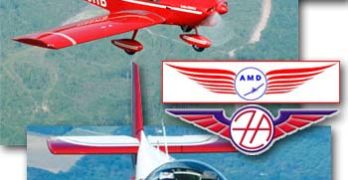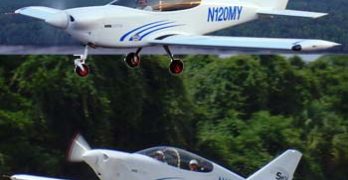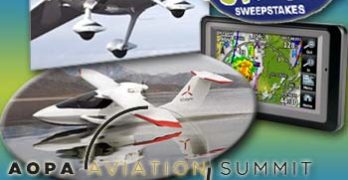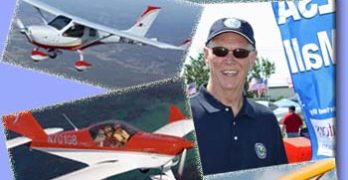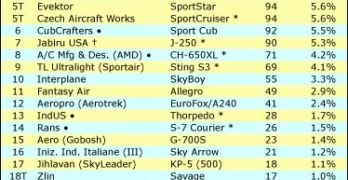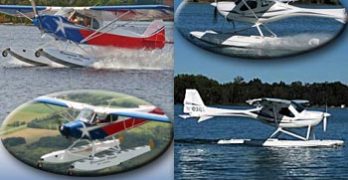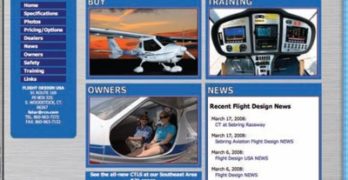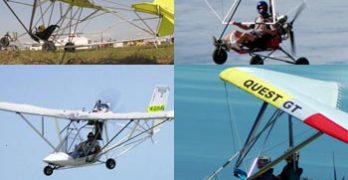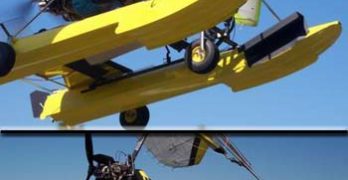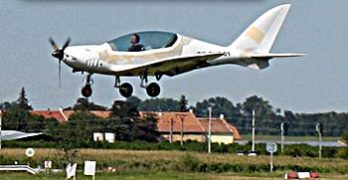Bad as in-flight break-up accidents are, many opinions often blur the big picture. Last spring NTSB recommended FAA “ground the fleet,” so to say. FAA chose further study. When additional CH-601s became involved, media and organizations jumped on the bandwagon. Let’s review. *** The focus is on the CH-601XL, of which about 1,500 kits have been sold since its introduction in 1984. Approximately half are complete and flying, said Zenith boss, Sebastien Heintz. *** Of the airplanes that broke up two were fully-built SLSA. One was built by Czech Aircraft Works; the other by AMD. The rest are owner-built kits… essentially one-off airplanes. Comparing one to a factory-built airplane is apples and oranges. *** Some allege Zenith and AMD have ignored the problem, but lots of detailed info on Zenith’s website suggests otherwise. Sebastien buttressed this saying, “We believe our effort is an example of an industry doing the right thing.
Search Results for : flight design ct
Not finding exactly what you expected? Try our advanced search option.
Select a manufacturer to go straight to all our content about that manufacturer.
Select an aircraft model to go straight to all our content about that model.
Flying MySky’s MS-1 — Homebase: Spruce Creek
Lucky me. On a warm, sunny day I drove less than a mile to the airport’s Downwind Cafe restaurant where I met the developers of MySky (the company) and their MS-1 (a new LSA model). After a tasty lunch we strolled over to their facility and hangar. All the while I was within a mile of my home; last year my wife and I caught a good deal at Spruce Creek, an upscale residential airpark. *** MySky is located on this airport and quietly, their team has been developing what I’d call the first of the “high-performance tandem LSA.” We have seven other tandem LSA (check at PlaneFinder 2.0) but none cruises near the 120-knot limit. MS-1 will, with its 120-hp Jabiru 3300 6-cylinder powerplant. *** Company VP, Tim Plunkett (an engineer and pilot of airliners to Pitts Specials) has been flight testing for 140 hours.
AOPA Summit 2009 Broadens Outreach of LSA
In its first year as the AOPA “Summit” (versus “Expo”), the 70-year-old, 415,000-member organization made lots of changes large and small. Among the most notable under capable new president Craig Fuller was much greater attention to LSA. Here’s the fast-read update… *** AOPA announced their 2010 Sweepstakes airplane is a Remos GX; the company had multiple displays and aircraft. Cessna brought a Skycatcher for selected reporters to fly. Craig Fuller had Icon A5 developer Kirk Hawkins on the center-hall stage. EAA’s Earl Lawrence led a LSA panel of FAA and industry experts (including yours truly). LAMA operated an LSA Mall area and had fruitful discussions with AOPA to advance goals of the LSA industry. SeaMax USA showed off their simulator seaplane running on MS Flight Sim. Tecnam North America, with several aircraft on display, announced new service centers for the popular Italian line of aircraft they now represent.
Heavy Topic for Light Aviation… LSA Safety
Others have written about LSA safety but did not reveal underlying facts. While I prefer to blog about new aircraft, LSA safety is a worthy topic. Here’s the quick summary: While every loss is tragic to family and friends, LSA safety numbers are better than some predicted. Now some detail. *** According to FAA records in the four-year period from August of 2005 to June of 2009, Special Light-Sport Aircraft experienced 12 fatal accidents resulting in the loss of 18 lives. *** In 10 of the 12 accidents a licensed pilot was in control (that is, not a Sport Pilot). Altogether, 10 manufacturers were affected. Only one, variations of the CH-601 produced by three companies, had multiple accidents and that veteran design remains under investigation so conclusions would be premature. *** In 2007, a year of high sales and activity, the industry experienced five crashes and eight fatalities. All other years had half that or less.
LSA Market Shares Are Stable through August 2009
As the challenging year for aircraft sales grinds on, Light-Sport Aircraft continue to hold their own. In tough times, when cash is tight, small enterprises may fare better than large companies. Their low expense structures, modestly compensated managers and employees, and lean manufacturing — as allowed by industry-standards certification — become strengths. *** But we see another quality. The half-million-plus general aviation pilots are more accepting of LSA today than three years ago. Organizations like AOPA are more fully embracing LSA, because their members are calling to ask questions. (Watch for a surprise LSA announcement at AOPA’s Aviation Summit in about a month!) GA pilots make up most buyers of LSA and those aviators now recognize the brands and have begun to acquire faith in companies certifying themselves (though many are still reserving judgement). *** Through August, a full month after AirVenture, the LSA fleet has grown to just under 1,700 fully-built aircraft not including ELSA kits or alternative aircraft like trikes and powered parachutes, nor any converted ultralights.
Pair of Floatplanes Announced: Legend and Remos
We’ve arrived at the end of the main float-flying season, but two of our largest Light-Sport Aircraft manufacturers just announced floatplane models. Welcome to the American Legend FloatCub and the Remos GX on floats. Each company contracted with float experts (a big difference from SeaMax or SeaRey). *** The most successful American LSA producer, American Legend won approval on October 2 for their Amphibious Legend FloatCub after declaring they met ASTM standards. FloatCub was put on sale for $159,000 and the first customer aircraft is being assembled. Legend went to long-established float company, Baumann Floats of New Richmond, Wisconsin. The new model flew in July, 2009 and made an appearance at Oshkosh. Unlike original Piper Cubs that were often put on floats, the Legend Cub has doors on both sides, a big benefit when docking. If purchased with the 120-hp Jabiru 3300, Legend FloatCub should prove quite energetic even at high elevations.
SLSA Service After the Sale
Most folks have probably never heard of ASTM International document F2295, Continued
Operational Safety Monitoring of a Light-Sport Aircraft. But Tom Peghiny, president of
Flight Designs USA, is intimately familiar with it. As the former chairman of the ASTM
Airplane Committee, Tom was a driving force behind requiring SLSA manufacturers to
face up to service after the sale and airworthiness monitoring. According to Tom, “The
SLSA industry will not survive unless we take our after-sale commitments seriously.
SLSA Service After the Sale Flight Design USA has a dedicated safety and compliance manager plus a number of
procedures in place to make sure customers get the service they need.”
Flight Design USA initiates its after-sale quality control by starting in the
beginning. Any individual involved in the assembly of CT airplanes imported into
the United States must undergo assembly compliance training through Lockwood
Aviation’s Aero Technical Institute. Thus customers are assured that their CTSW or CTLS
meets all original manufacturer quality standards.
Ultralight Trainers…Exemptions?…SLSA Trainers
Ah, sweet Part 103 ultralights. These lightest of powered aircraft have the least FAA regulation of any flying machine. A single piece of letter paper holds the entire rule. But how do you learn to safely fly a single seater? Oh, there’s the rub. *** Through January 31, 2010, two-seat ultralights converted to ELSA status may train pilots for hire. Then they must cease… maybe. Some feel that the nation lacks enough such trainers so Aero Sports Connection petitioned for an extension. Sounds reasonable. *** But what about companies that spent resources to win FAA approval? It sounds like those who played by the rules as FAA wished could miss their reward of taking over such training aircraft sales. The controversy has complications and you probably don’t want to read it all. *** But here’s what industry organization LAMA has to say: “In the 4.3 years since the first approval, 100 SLSA models have been approved.
LSA #100 Reached! …in Less Than Five Years
Triple digits! In five years the LSA industry has reached SLSA model #100. Actually, here’s another one that slipped by our radar. Info now shows SLSA #99 was the Krucker amphib trike named Cygnet and Van’s RV-12 was technically #100. Our SLSA List shows Special Light-Sport Aircraft in order of their approval. *** “We got our SLSA completed 3 July 2009,” wrote U.S. representative, Michael Percy, of XL Kites. This means the Cygnet he imports was approved a couple weeks earlier than the Van’s RV-12 on July 21st, which came one day after the fifth anniversary of the new rule announcement (July 20th, 2004). *** One hundred models approved in such a short time has no comparison in worldwide aviation history. In fact, reaching #100 only took 4.3 years because the first approval occurred on April 7th, 2005 …that’s two new models every single month!
A First Look at Two New Tandem LSA
Here come the new tandems. And I do mean new! Suspending a full flight-trial regime, U.S.-based MySky took their new MS-1 on a long maiden voyage from Daytona Beach, Florida to Oshkosh 2009. And just yesterday, the Slovak Republic-based sportShark, from Shark.Aero, took its first flight. *** Tandems seat occupants fore and aft like some existing SLSA models but that’s where the similarities end. MS-1 and sportShark are clean-sheet designs aimed at performance and comfort, where all tandems presently approved are recreational aircraft. *** Other than the composite Sky Arrow*, all other seven tandems in the SLSA List are simpler, first-generation designs. All are fabric covered. None are speedsters. (Note: You can find all these qualities for any of the 99 SLSA models using PlaneFinder 2.0.) *** One and sportShark are second-generation designs. In both cases they were created after and because of the Light-Sport rules and ASTM industry-standards certification.
- « Previous Page
- 1
- …
- 111
- 112
- 113
- 114
- 115
- …
- 145
- Next Page »


